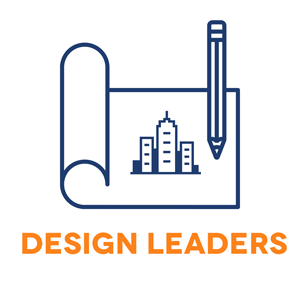Raymond Drive in Union City, a suburb just southwest of Atlanta, is a quiet community of duplexes and single-family homes. About five years ago, Union City started getting an influx of Latino residents, some of who settled in the neighborhood and made it home.
Now, Raymond Drive is a focus of Union City’s efforts. Mayor Vince Williams wants to make sure the residents of Raymond Drive have equal access to public resources.
“Once I found we had this growing Latinx community, I wanted to make sure that we were involved in making sure that they were not left out,” says Williams, an alumnus of the inaugural Just City Mayoral Fellowship with the Mayors’ Institute on City Design. He has led Union City for the past eight years, and over the last 1.5 years, he has cultivated a special focus on Raymond Drive.
The neighborhood faces a host of challenges. One of the city’s biggest concerns has been food insecurity, which COVID-19 has worsened. Union City wants to make sure residents can access food, education and job opportunities, but Williams says there’s a language barrier that impedes that sort of conversation with adults. Though the city has some Spanish speakers on staff, the only communication that many government employees have with families is through their bilingual children.
Many people also rent from absentee landlords who don’t always maintain their properties, Williams adds. He says there are more absentee landlords on Raymond Drive compared to other parts of the city.
 In order to improve conditions on Raymond Drive, Williams is meeting with professionals from the Mayors’ Institute on City Design and local community leaders such as pastors, housing advocates and health and education experts. With their input, Union City is developing a plan to make sure it is there for people on Raymond Drive.
In order to improve conditions on Raymond Drive, Williams is meeting with professionals from the Mayors’ Institute on City Design and local community leaders such as pastors, housing advocates and health and education experts. With their input, Union City is developing a plan to make sure it is there for people on Raymond Drive.
One of these community leaders is Deris Coto. As Hispanic and equipping pastor at First Baptist Church of Fairburn, Coto frequently works with residents of Raymond Drive. He says he strives to carry out God’s work by providing marriage counseling. The church also delivers provisions from its food pantry.
Coto says Union City must start its work by surveying Raymond Drive residents and figuring out their worries and ultimate goals, whether it’s food, health, education or public safety.
He also says to keep equity concerns in mind. “If we build brand new houses in there and they can’t afford it, all that’s going to happen is all those families that can’t afford it are just going to move to another area of Union City,” he says.
Someday, Coto would like to see a center in the neighborhood that allows different organizations and places of worship to reserve blocks of time. That way, a church like Coto’s could set up a spot where kids could come for homework assistance. Parents often can’t help with schoolwork because they don’t know English well enough or are busy working, Coto says.
Some people living on Raymond Drive don’t reach out to the local government because of immigration fears, Williams says. He says a person’s immigration status shouldn’t exclude them from what Union City has to offer.
“However you got here, that’s between you and whoever got you here,” he says. “You are a part of the fabric of our community. And we think that they deserve as much as anyone else that’s residing in the community.”
So far, the city is in the early stages of working on Raymond Drive. It plans to reach out to absentee landlords in the neighborhood and gauge their interest in either improving their property or allowing renters to work with the Neighborhood Assistance Corporation of America to buy the property themselves.
That way, renters could become homeowners.
“They will be better suited to be community members, rather than absentee landlords, because they will be eager to make sure that they maintain their properties, make sure that things are going smooth in the community,” Williams says.
Eventually, he plans to collaborate with them on needed home renovations and maintenance, giving the community a facelift. He also wants to widen sidewalks and plant trees.
It’s also about educating residents about city amenities available close to them, such as a community center and skate park, Williams says. In addition, Union City is in the process of building affordable housing, including senior housing, in the area. The city is working to get Spanish interpreters so everyone on Raymond Drive understands what the city is doing.
Williams says going through the Just City Mayoral Fellowship showed him that a healthy relationship between the city and Raymond Drive residents can be accomplished. The fellowship also informed him about resources that Union City wasn’t familiar with.
This is an ongoing project. For the next few years, Williams plans to focus on working with residents and community leaders in order to bring equity to Raymond Drive. The city is holding its first event for the community on July 17 as a way of letting the neighborhood know that the city is here for it. The gathering will have food trucks, games and a mobile vaccine unit. There will also be resource tables from the city, county, state and federal governments.
“We want to make sure that they are afforded all of the opportunities that anyone else has in this city,” Williams says of residents. “It doesn’t matter to me how they got here. They’re here. And it is incumbent upon us as a community to embrace them and help them be productive citizens.”
This article is a part of “Design Leaders,” a series highlighting mayors’ roles in design and the built environment in their cities. Design Leaders is made possible with the support of The Mayors’ Institute on City Design, a National Endowment for the Arts leadership initiative in partnership with the United States Conference of Mayors.
Adina Solomon is a freelance journalist based in Atlanta. She writes on a range of topics with specialties in city design, business and death. Her work has appeared in The Washington Post, CityLab, U.S. News & World Report, and other national and local outlets.








